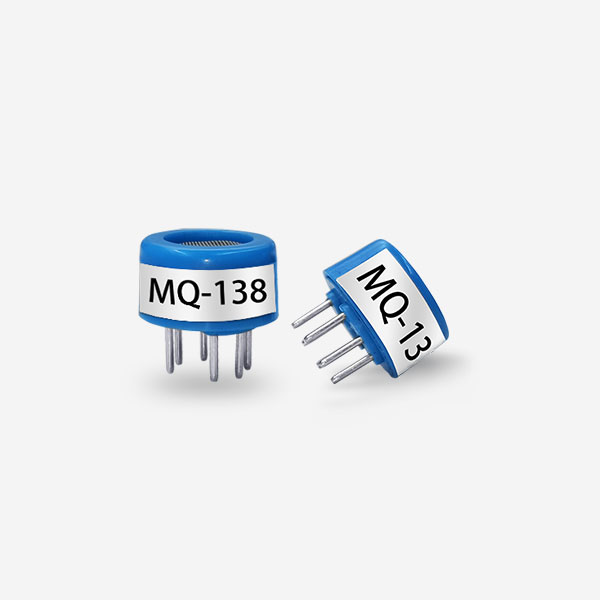Indoor air quality (IAQ) is a critical aspect of our overall well-being, as we spend a significant amount of time indoors, whether at home, in the office, or in other enclosed spaces. Poor IAQ can have adverse effects on our health, leading to respiratory problems, allergies, and other health issues. One effective way to ensure good IAQ is by using gas sensors to monitor and control indoor air pollutants. In this article, we will explore the importance of enhancing indoor air quality with gas sensors and how they can contribute to a healthier and more comfortable indoor environment.

Gas sensors are devices that detect and measure the concentration of various gases in the air. They can detect a wide range of indoor air pollutants, including volatile organic compounds (VOCs), carbon dioxide (CO2), carbon monoxide (CO), nitrogen dioxide (NO2), and ozone (O3). These pollutants can originate from various sources, such as building materials, cleaning products, furniture, appliances, and human activities. By continuously monitoring the levels of these gases, gas sensors provide valuable information about IAQ and enable appropriate actions to be taken to improve it.
One of the main benefits of using gas sensors is the early detection of indoor air pollutants. Many indoor air pollutants are odorless and colorless, making them difficult to detect without specialized equipment. Gas sensors can detect even low concentrations of these pollutants and provide real-time data on their levels. This early detection allows for prompt actions to be taken to mitigate the sources of pollution and improve IAQ.
Another advantage of gas sensors is their ability to identify specific pollutants. Different gases have different effects on human health, and some can be highly toxic or carcinogenic. By accurately identifying the types and concentrations of indoor air pollutants, gas sensors help determine the severity of the problem and guide appropriate remedial measures. For example, if high levels of VOCs are detected, it may indicate the need to improve ventilation or reduce the use of certain products that emit these compounds.
Gas sensors also play a crucial role in monitoring ventilation effectiveness. Proper ventilation is essential for maintaining good IAQ, as it helps remove indoor air pollutants and replenish fresh air. Gas sensors can measure CO2 levels, which are often used as an indicator of ventilation efficiency. High CO2 levels indicate inadequate ventilation, which can lead to a buildup of other pollutants and a decrease in IAQ. By continuously monitoring CO2 levels, gas sensors provide valuable feedback on the effectiveness of ventilation systems and help ensure optimal airflow and air exchange rates.
In addition to monitoring indoor air pollutants, gas sensors can be integrated into smart building systems to enable real-time control and automation. For example, when high levels of a particular gas are detected, such as CO or NO2, gas sensors can trigger ventilation systems to increase airflow or activate air purifiers to remove the pollutant. This automated response ensures a timely and effective mitigation of IAQ issues, providing occupants with a healthier and more comfortable indoor environment.
Furthermore, gas sensors can contribute to energy conservation efforts by optimizing ventilation and air conditioning systems. By continuously monitoring IAQ parameters, such as CO2 levels and humidity, gas sensors can provide data that helps determine the appropriate ventilation and cooling requirements. This data-driven approach allows for the adjustment of HVAC systems based on actual occupancy and IAQ needs, reducing energy waste and improving overall energy efficiency.
Despite the numerous benefits of gas sensors for enhancing IAQ, there are some challenges to their widespread adoption. One challenge is the cost of the sensors, which can vary depending on the type and quality of the sensor. However, advancements in technology and increased demand are driving down costs, making gas sensors more accessible to a wider range of users. Another challenge is the need for proper calibration and maintenance of the sensors to ensure accurate and reliable measurements. Regular calibration and maintenance are essential to ensure the sensors' performance and longevity.

In conclusion, enhancing indoor air quality with gas sensors is a crucial step towards creating healthier and more comfortable indoor environments. Gas sensors provide real-time monitoring of indoor air pollutants, enabling early detection and identification of specific gases. They also help assess ventilation effectiveness, enable real-time control and automation, and contribute to energy conservation efforts. As we spend more time indoors, prioritizing IAQ and utilizing gas sensors can significantly improve our overall well-being and productivity. With ongoing advancements in sensor technology, we can expect even more sophisticated and affordable solutions f
 : +86 155 8830 2704
: +86 155 8830 2704 : jxdziot@gmail.com
: jxdziot@gmail.com
